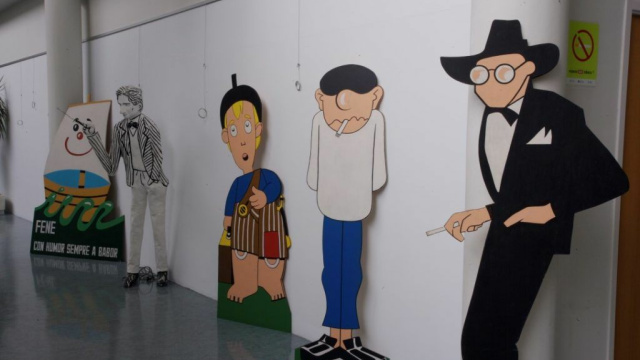What to See

Museo do Humor
Arts education is fundamental to develop creative capacity, increase cultural knowledge and exercise people's sensitivity. Art offers viewers visions, dreams, fears, memories, transports them to fantastic worlds, captures everyday moments and transmits values. Why is it that sometimes when someone visits a museum, instead of showing enthusiasm and interest in what they see, they seem tired or even bored? At the Museum of Humour in Fene this does not happen. Our aim is to entertain and amuse visitors but also to make them reflect on what they see during their stay in the museum. The Museum of Humour in Fene is a singular and unique centre in Galicia. It currently displays around 300 original works by Galician and international cartoonists. A visit to the Museum of Humour in Fene allows, first of all, to get closer to the figure of its main promoter, the cartoonist Xaquín Marín. With this as a starting point, the tour through the different rooms of the museum provides visitors with a contact with the main references of Galician, national and international graphic humour. From the classics such as Xaquín Marín, Siro, Reimundo Patiño, Quesada or Forxán, to the current ones such as Luís Davila, Pinto&Chinto, Andrés Meixide, Kiko Dasilva, Leandro Barea or Miguelanxo Prado. In addition, the Museum of Humour of Fene has a corner reserved for caricature and two thematic rooms dedicated, on the one hand, to black humour and, on the other, to the designed band. Although graphic humour, in its different aspects, continues to be the central element around which the permanent exhibition of the Museum of Humour revolves, its rooms also display: - Funny or curious objects such as the figures of the "Gallego en las escaleras", the "Cabeza gallega", the "Gaspariño", the "Carrabouxo", the "Trono del demonio", etc. - Concave and convex mirrors in which visitors can laugh out loud, observing their deformed image. - Collection of stones and objects of daily use painted by Serafín (donation of Mr. José Luís Olavarría). - Various publications such as the collections of "Sapoconcho" (magazine of the Museum of Humour), "Retranca" or old copies of "La Codorniz" or "El Jueves".

















































































































































































